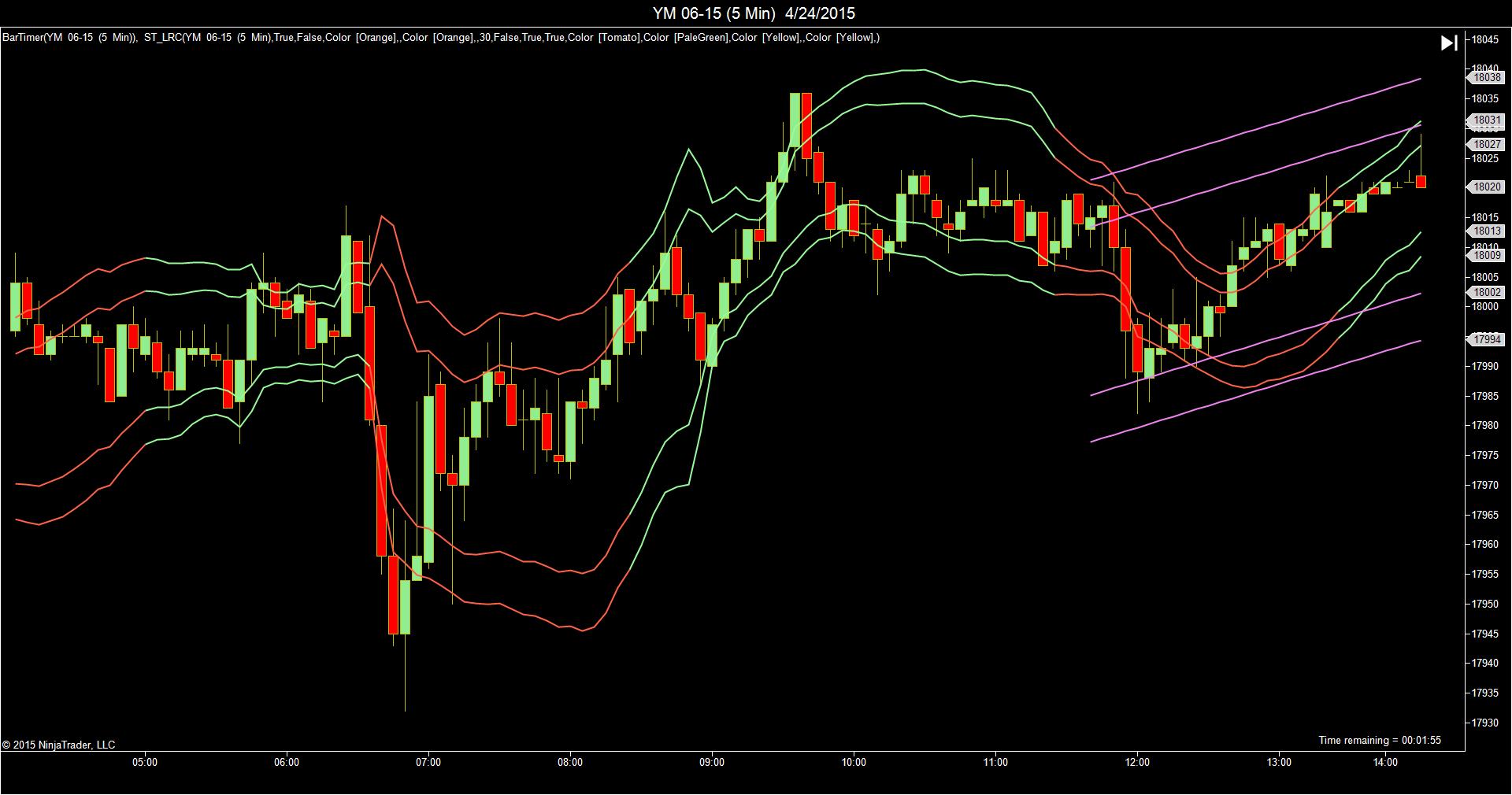The Problem with Traditional Linear Regression
Linear regression is a mathematical and statistical model for determining the trend of data points and predicting future data points. According to wikipedia, “If the goal is prediction, or forecasting, or reduction, linear regression can be used to fit a predictive model to an observed data set of y and X values. After developing such a model, if an additional value of X is then given without its accompanying value of y, the fitted model can be used to make a prediction of the value of y.”
Without getting into hardcore math, X represents time, y represents price, and the linear regression mathematical formula helps determine the trend of price over time. And, with this determination, predict future prices. Often, a regression line and channel are created, generally a multiple of standard deviations away from the regression line.
But, there are two important factors to consider that can drastically affect the accuracy of linear regression’s predictions. First is the period, which in a financial case would represent the number of bars being used in the linear regression formula. Obviously, the longer the period, the longer the trend that results, and conversely, the shorter the period, the shorter the trend that results.
Second, and more important, is the channel width. The problem is that traditional linear regression analysis uses channels anywhere from one to two standard deviations from the regression line. But, we at Stealth Traders have found that to be unreliable for predicting price movement. So, we developed our own. Different than any other linear regression channel indicator, the width of the Stealth Traders LRC channel is based on a proprietary formula developed from 30 years of successful trading experience, resulting in the most accurate entry and exit signals. Click on the chart to enlarge it.
Generally, opportunities occur when price rises above the channel (overbought) or drops below the channel (oversold). More specifically, when the channel is trending up, buying opportunities arise when the price is at or below the bottom of the channel. Similarly, selling opportunities arise when the channel is trending down and the price is at or above the top of the channel. When the channel is flat (not trending up or down), it may be advisable to hold off entering any trades and wait for the channel to trend.
You’ll also notice in the chart that we have the TraceLines option on, which show historically where the linear regression channel was, and which direction it was trending.
You can try the LRC indicator for free and see for yourself.

